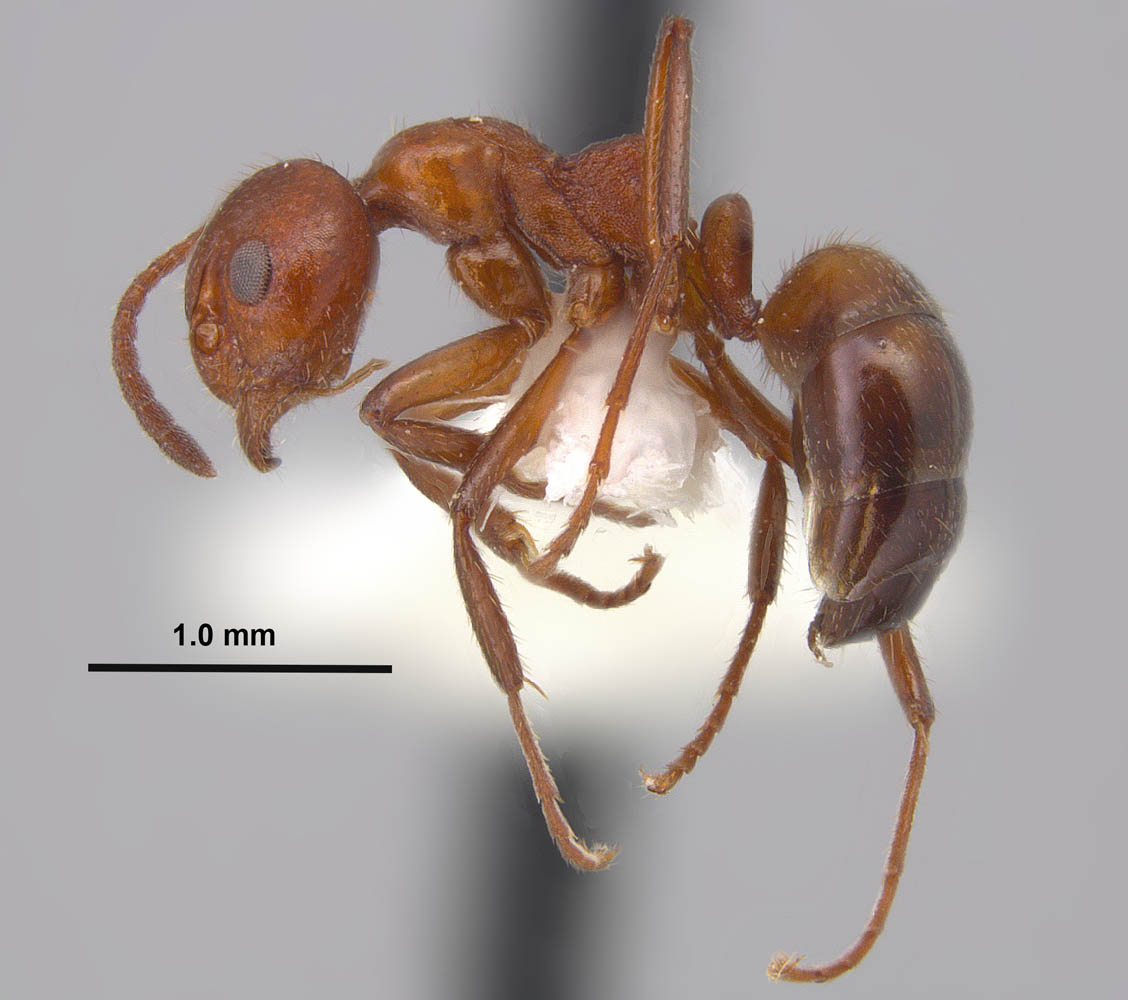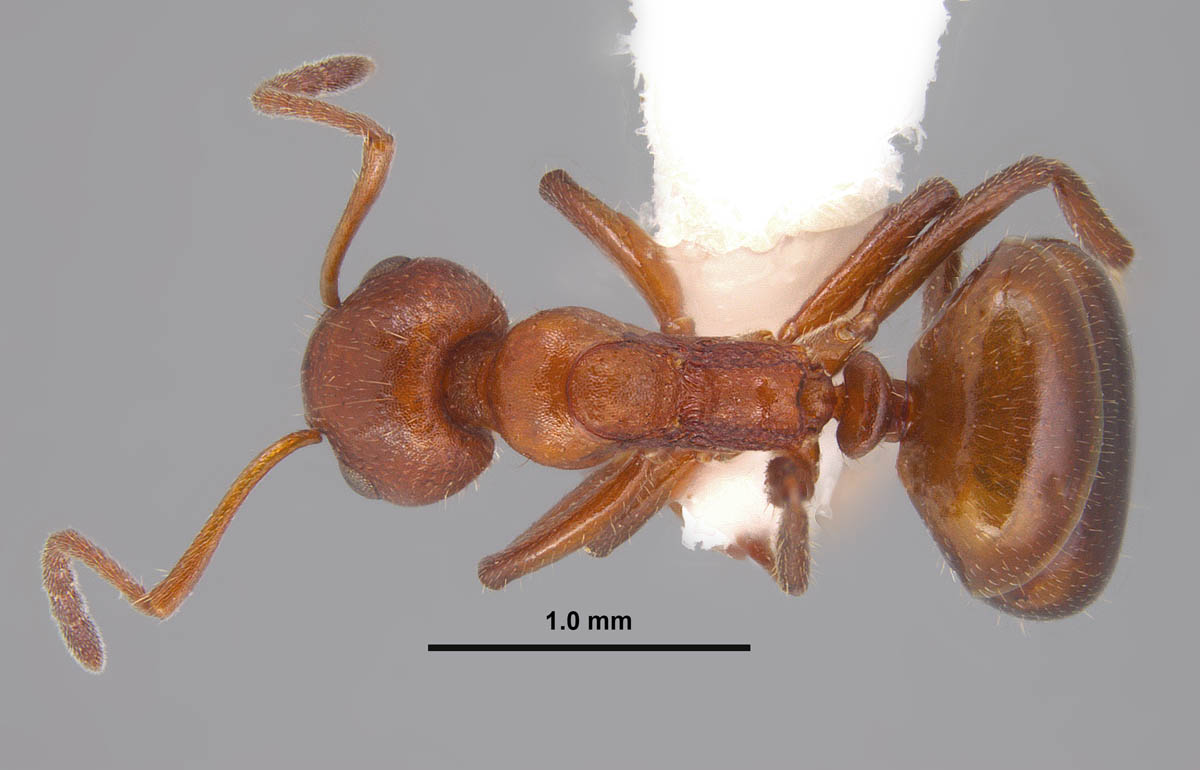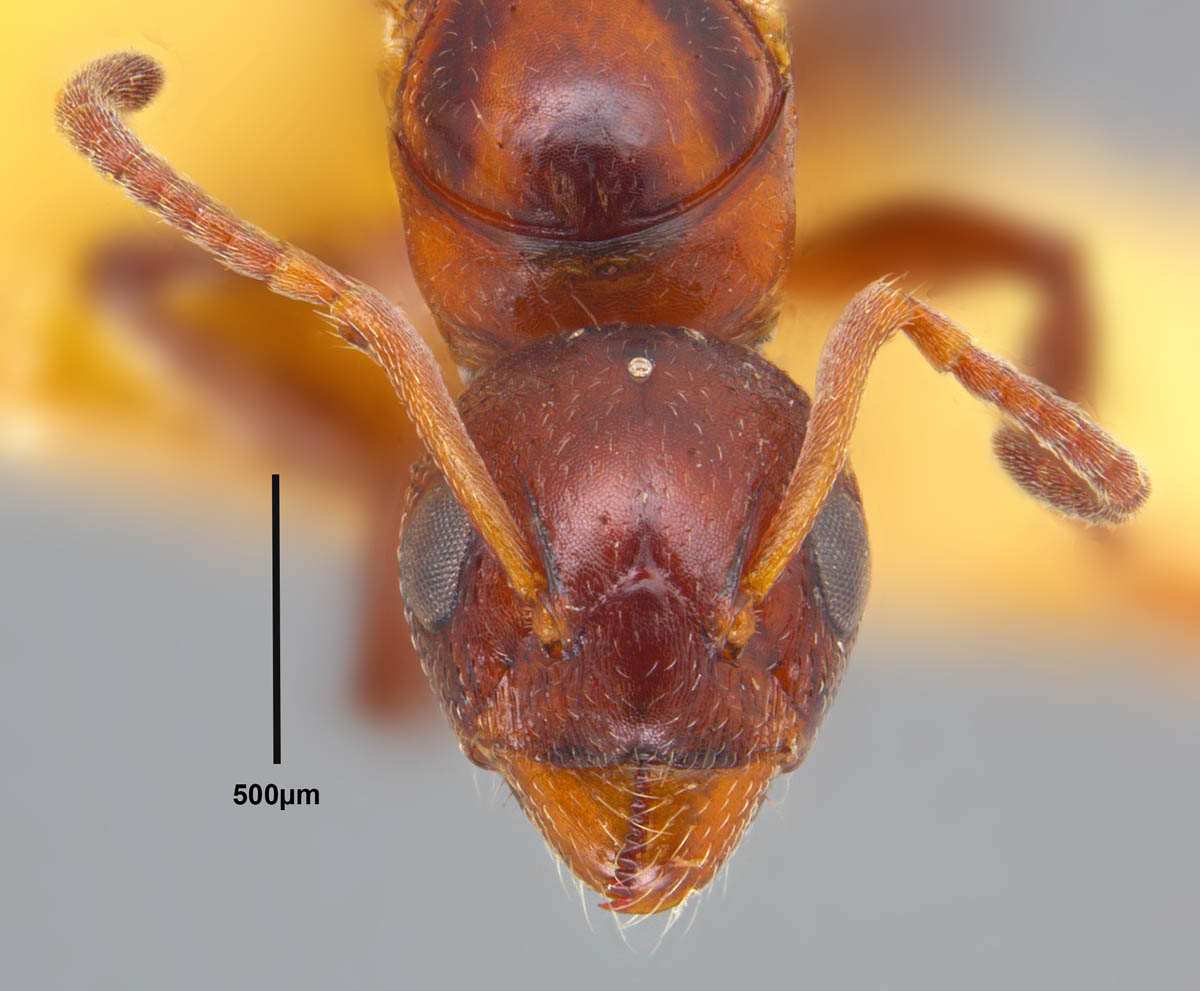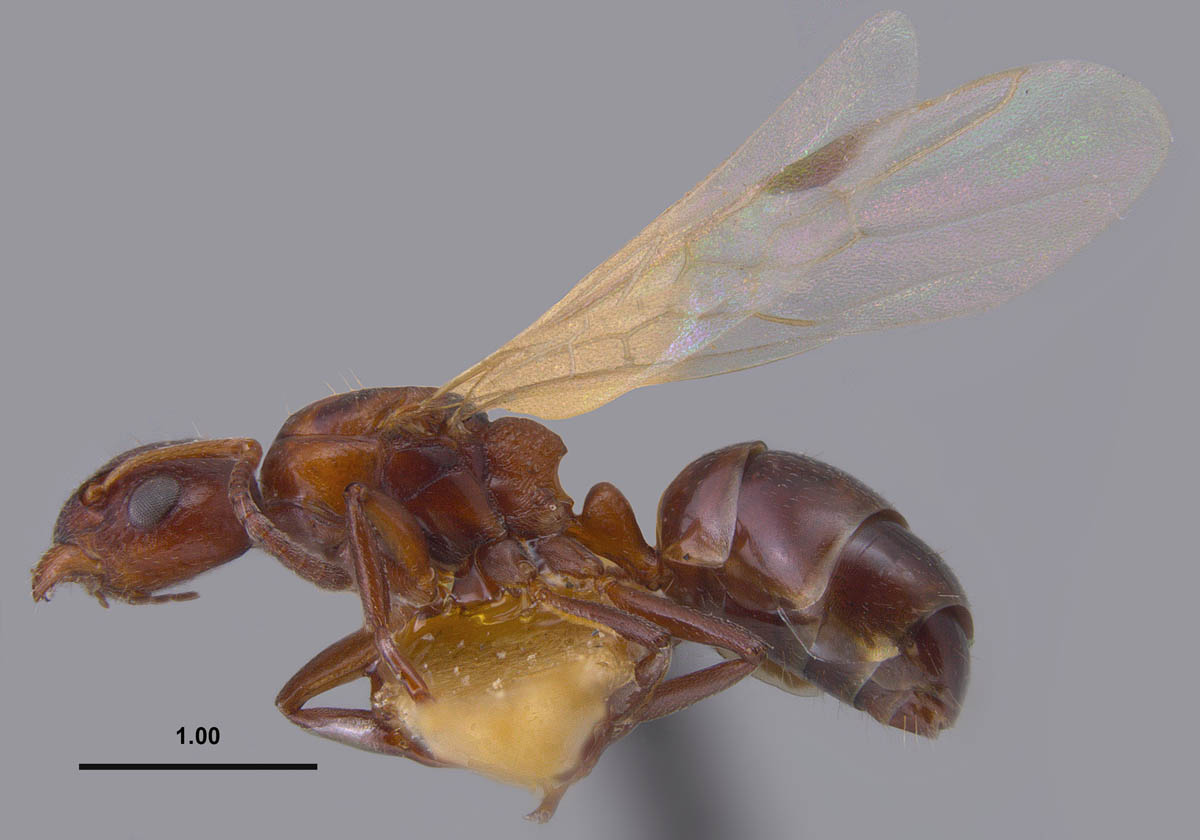Subfamily DOLICHODERINAE By Joe A. MacGown, Uploaded 2009, last updated 17 December 2015 |
||
Dolichoderus pustulatus, full face view of the head of a worker, Oktibbeha Co., MS (Photo by James Lewis and Joe A. MacGown) |
Dolichoderus pustulatus, lateral view of a worker, Oktibbeha Co., MS (Photo by James Lewis and Joe A. MacGown) |
Dolichoderus pustulatus, dorsal view of a worker, Oktibbeha Co., MS (Photo by James Lewis and Joe A. MacGown) |
Dolichoderus pustulatus, full face view of the head of a queen, Oktibbeha Co., MS (Photo by James Lewis and Joe A. MacGown) |
Dolichoderus pustulatus, lateral view of a queen, Oktibbeha Co., MS (Photo by James Lewis and Joe A. MacGown) |
Dolichoderus pustulatus, dorsal view of a queen, Oktibbeha Co., MS (Photo by James Lewis and Joe A. MacGown) |
Dolichoderus pustulatus, lateral view of a worker, Oktibbeha Co., MS (Photo by Joe A. MacGown) |
||
Introduction Taxonomic History (provided by Barry Bolton, 2015) Identification Queen: Approximately 3.82 – 4.0 mm in total length, mesosomal length approximately 1.40 mm; HW about 0.85 mm; and HL about .95 mm. Overall concolorous reddish brown with head, mesopleurae, gaster and legs often darker, mandibles and antennae lighter, sides of pronotum a lighter orangish brown, mesoscutum lighter orangish brown with a dark brown patch anteromedially and a dark brown stripe on on each side, and posterior edge of mesoscutellum black or some specimens overall dark brownish black. Head with foveolae anteriorly, strong striae posteriorly, and remainder of head with light punctate/reticulate sculpture; mesosoma, waist, and gaster mostly lacking sculpture, shiny, except for propodeum, which has deep foveolae. Biology and Economic Importance Distribution Nova Scotia, Canada westward to Illinois and Oklahoma; southward to Florida and Mississippi. Widely distributed in the eastern US, and in the southeastern US it has been reported from AL, FL, GA, MS, NC, SC, TN. . Literature Cited Creighton, W. S. 1950. The ants of North America. Bulletin of the Museum of Comparative Zoology 104:1-585. Emery, C. 1894. Studi sulle formiche della fauna neotropica. VI-XVI. Bullettino della Società Entomologica Italiana 26:137-241. Johnson, C. 1989. Identification and nesting sites of North American species of Dolichoderus Lund (Hymenoptera: Formicidae). Insecta Mundi 3:1-9. MacKay, W. P. 1993. A review of the New World ants of the genus Dolichoderus (Hymenoptera: Formicidae). Sociobiology 22:1-148. Mayr, G. 1886. Die Formiciden der Vereinigten Staaten von Nordamerika. Verhandlungen der Kaiserlich-Königlichen Zoologisch-Botanischen Gesellschaft in Wien 36:419-464. Smith, D. R. 1979. Superfamily Formicoidea. Pp. 1323-1467 in: Krombein, K. V.; Hurd, P. D.; Smith, D. R.; Burks, B. D. (eds.) 1979. Catalog of Hymenoptera in America north of Mexico. Volume 2. Apocrita (Aculeata). Washington, D.C.: Smithsonian Institution Press, pp. i-xvi, 1199-2209. Wheeler, W. M. 1905. The North American ants of the genus Dolichoderus. Bulletin of the American Museum of Natural History 21:305-319. Wheeler, G. C.; Wheeler, J. 1951. The ant larvae of the subfamily Dolichoderinae. Proceedings of the Entomological Society of Washington 53:169-210. Wheeler, G. C.; Wheeler, J. 1966. Ant larva of the subfamily Dolichoderinae: supplement. Annals of the Entomological Society of America 59:726-732. Links |
||









